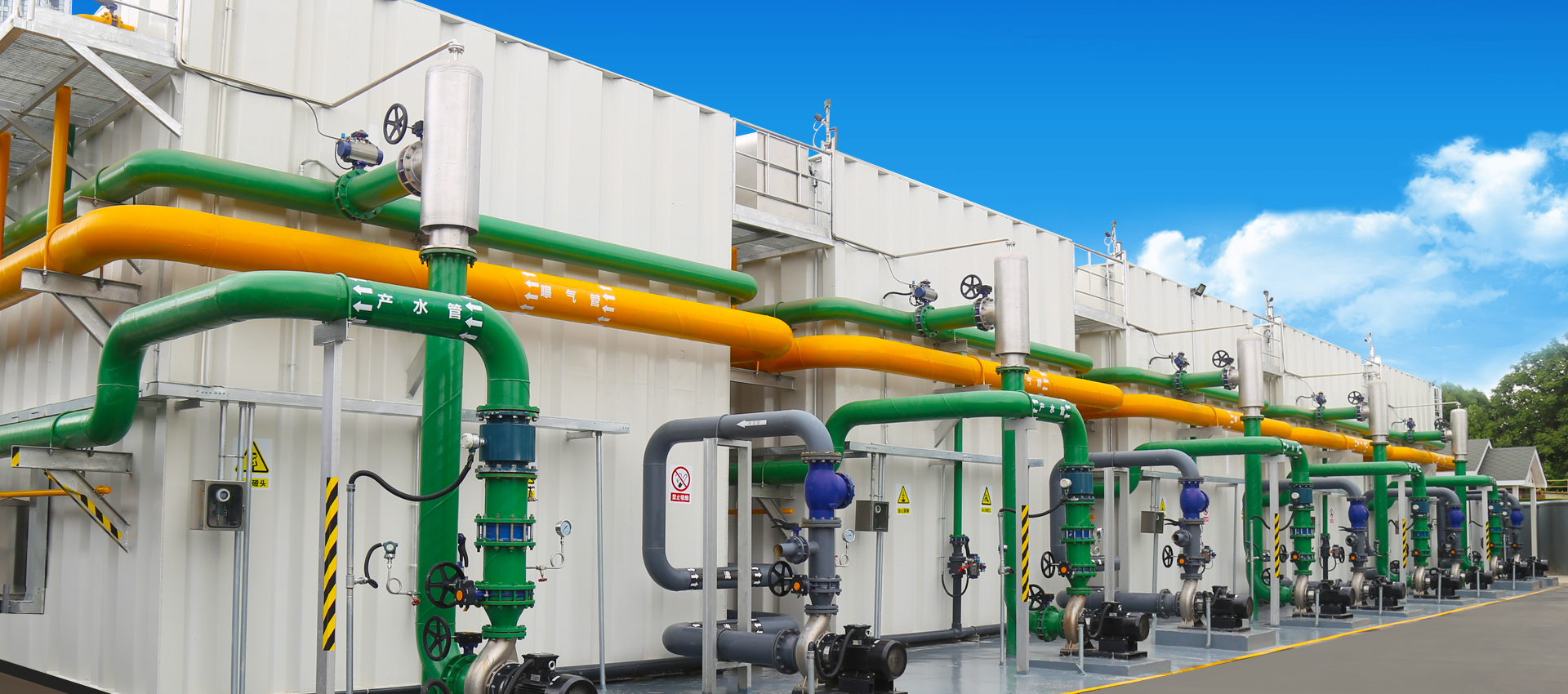With the increasingly strict standards of urban sewage treatment and discharge, many sewage treatment plants are facing the challenge of upgrading. For example, in China, Level 1 B plant is requested to be up graded to level 1 A, and level 1 A plant is requested to be upgraded to surface water IV standard. With the characteristics such as small footprint, good and stable effluent quality that can satisfy the requirement of water reuse, submerged MBR has become a popular technology for the applications of municipal sewage treatment plant construction, reconstruction and decentralized wastewater treatment.

Submerged MBR system is usually composed of biological treatment basin, membrane pool, membrane module, suction pump and other parts. System applies aerobic aeration basin for biological treatment; after the microbial degradation of the organic matter, wastewater enters the membrane pool with membrane modules; then, relying outlet power on gravity, or negative pressure generated by pump suction, or vacuum pump, discharge the effluent. The aeration device is set at the bottom of the membrane module. In addition to the function of aeration, the cross-flow of rising air also has strong mixing and stirring effect which can scour the membrane surface.

Submerged MBR technology has the following characteristics:
1) The effluent quality is high and stable. The filtration accuracy of the MBR membrane module is up to 0.03μm, which can effectively separate solid and liquid. The suspended solids and turbidity of effluent are close to zero, and the appearance of effluent is good.
2) Good phosphorus and nitrogen removal effect. It is beneficial to the interception, growth and reproduction of slow-proliferating nitrobacteria and other bacteria. The nitrification efficiency, COD removal rate and other indicators of the system can be improved.
3) High sludge concentration, small membrane pool area, high volume load; membrane separation replaces the secondary sedimentation tank and filtration tank in the traditional sewage treatment process, which not only shortens the treatment process, but also improves the effluent quality.
4) More flexible and stable operation control. The high efficiency of membrane interception traps the microorganisms in the reactor, and completely separates hydraulic retention time (HRT) and sludge age (SRT) of the reactor.
5) Longer sludge age and smaller sludge quantity; membrane separation retains macromolecules with refractory composition in wastewater in the bioreactor for a longer time.
6) Total number of bacteria and coliform bacteria in MBR effluent decrease significantly, so the subsequent dosage of disinfectants and corresponding production of disinfection by-products could be reduced.
7) MBR effluent has a low silt density index (SDI), which reaches the reverse osmosis inlet water standard. MBR and reverse osmosis can be used together to obtain high quality reclaimed water.
With the increasingly strict standards of urban sewage treatment and discharge, many sewage treatment plants are facing the challenge of upgrading. For example, in China, Level 1 B plant is requested to be up graded to level 1 A, and level 1 A plant is requested to be upgraded to surface water IV standard. With the characteristics such as small footprint, good and stable effluent quality that can satisfy the requirement of water reuse, submerged MBR has become a popular technology for the applications of municipal sewage treatment plant construction, reconstruction and decentralized wastewater treatment.

Submerged MBR system is usually composed of biological treatment basin, membrane pool, membrane module, suction pump and other parts. System applies aerobic aeration basin for biological treatment; after the microbial degradation of the organic matter, wastewater enters the membrane pool with membrane modules; then, relying outlet power on gravity, or negative pressure generated by pump suction, or vacuum pump, discharge the effluent. The aeration device is set at the bottom of the membrane module. In addition to the function of aeration, the cross-flow of rising air also has strong mixing and stirring effect which can scour the membrane surface.

Submerged MBR technology has the following characteristics:
1) The effluent quality is high and stable. The filtration accuracy of the MBR membrane module is up to 0.03μm, which can effectively separate solid and liquid. The suspended solids and turbidity of effluent are close to zero, and the appearance of effluent is good.
2) Good phosphorus and nitrogen removal effect. It is beneficial to the interception, growth and reproduction of slow-proliferating nitrobacteria and other bacteria. The nitrification efficiency, COD removal rate and other indicators of the system can be improved.
3) High sludge concentration, small membrane pool area, high volume load; membrane separation replaces the secondary sedimentation tank and filtration tank in the traditional sewage treatment process, which not only shortens the treatment process, but also improves the effluent quality.
4) More flexible and stable operation control. The high efficiency of membrane interception traps the microorganisms in the reactor, and completely separates hydraulic retention time (HRT) and sludge age (SRT) of the reactor.
5) Longer sludge age and smaller sludge quantity; membrane separation retains macromolecules with refractory composition in wastewater in the bioreactor for a longer time.
6) Total number of bacteria and coliform bacteria in MBR effluent decrease significantly, so the subsequent dosage of disinfectants and corresponding production of disinfection by-products could be reduced.
7) MBR effluent has a low silt density index (SDI), which reaches the reverse osmosis inlet water standard. MBR and reverse osmosis can be used together to obtain high quality reclaimed water.